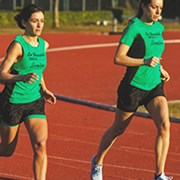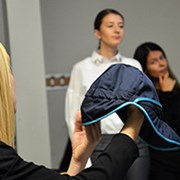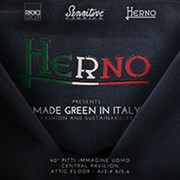Selected projects
A new gilet made exclusively for the RadiciGroup Ski Club, but designed to soon become a “must have” garment for athletes and non-athletes alike.
The gilet is made of RadiciGroup’s Raditek® Fine yarn – a high-tenacity polyamide yarn patented for high-technology applications, such as sails and parachutes –, which endows the fabric with high tear and abrasion resistance, while keeping it lightweight. Furthermore, the yarn was developed to resist UV radiation and maintain its performance characteristics unchanged over time.
The fabric was woven in Germany, whereas all the other processing was done in the Region of Lombardy, Italy. Moreover, the fabric was enhanced with a PFC-free anti-drop treatment. The gilet features fibreball insulation with siliconized RADILON® staple fibre, another RadiciGroup product. This filling is an excellent alternative to goose down, provides effective warmth, and is lightweight and hypoallergenic.
As for the accessories, the zipper was made of polyamide, while the ropes were also made of nylon, but with a minimal percentage of elastomer added, so as to ensure recyclability.
The garment was conceived, designed and made according to the ecodesign concept: at the end of its useful life, the gilet will be shredded, ground, thermo-mechanically extruded and finally compounded to give it a second life in the world of polymers. In fact, one of the most important challenges today for RadiciGroup is ensuring that all the rejects and recovered materials in the textile world become new high performance engineering polymers. This is the only way for the synthetic fibre textile industry to become truly sustainable.
The collaboration among highly specialized companies making up a short and sustainable production chain made it possible to offer a sportswear garment that not only combined high technical performance with comfort, style and ease of maintenance, but also was designed from inception to have a second life.
A jersey made for the cyclists of the Val Gandino Cycling Club. The jersey is entirely made of RadiciGroup r‑Radyarn®, a polyester continuous filament obtained from ordinary recycled plastic PET bottles. Compared to virgin polyester, 1 kg of polyester from recycled PET requires 45% less energy and cuts CO2 emissions by up to 3 kg and, on top of that, gives the plastic a second life.
Garments made of polyester yarn feature excellent tenacity and resilience, high abrasion resistance, good resistance to chemical and physical agents and a high elasticity modulus. Polyester fibres are also hydrophobic and, therefore, the garments dry very quickly. Another important aspect is the ease of customization, in that polyester fabric can be easily used for any kind of printing.
The shorts are made of polyamide (using Sensitive Fabrics woven by Eurojersey) to ensure light weight, skin comfort, sweat absorption and breathability. The shorts are comfortable and pleasant to wear and are made of a luminous fabric that is wash resistant and retains its bright colours over time.
A new use for an extremely high performance yarn in Polyamide: it is called Raditek® Fine and up to now has been used mainly in the aeronautical field, in the world of sailing and for parachutes. Already from the type of application it is clear that the mechanical resistance to abrasion and tearing are a “must".
Why not try using it to make athletics shorts? It was a RadiciGroup idea that, in collaboration with La Recastello sports club, has developed shorts for athletes: nylon in contact with the skin is able to absorb perspiration, ensures breathability, and the right comfort and is "lightweight".
Even the athletes’ singlet and t-shirt are in nylon: the brand of RadiciGroup yarn is Radilon®, with Sensitive Fabrics® by Eurojersey. In this case too, the garment ensures excellent moisture management and comfort upon contact with the skin, which are essential in the case of long-lasting sports performances.
RadiciGroup, Eurojersey and Herno present the first scientific study of sustainability on a fashion garment, which is unique in Europe. In this pioneering project, they have mapped the environmental impact of a man’s jacket from Herno in all phases of its production process (from the so-called raw materials’ “pile”, the production with polymerization, spinning, weaving and packaging, deciding to make the sustainability commitment a topic of competitiveness and circular economy).
The partnership was born well before the law no.221 of 28 December 2015 governing environmental legislation to promote “green economy” measures and contain the excessive use of natural resources. The national scheme for voluntary labelling “Made Green in Italy” adopts the methodology for determining the environmental footprint of PEF - Product Environmental Footprint products. The PEF methodology assesses the environmental performance of the entire production cycle.
The project has allowed the production chain to:
- Identify the value of Made in Italy from the yarn to the consumer’s wardrobe, passing through the whole production chain;
- Identify the final Herno garment as100% Made in Italy;
- State the garment’s environmental performance for the end consumer;
- Confirm Italian leadership in technological innovation in the textile sector.
- Manufacturing the jacket outside Europe would have involved 90% more CO2 emissions.
- The COMIL (cost for the environment) of the jacket made outside Europe would have been 5.22 EUR, compared to 1.97 EUR if made in Italy (the jacket in China may cost less to produce, but costs a lot more for the environment: 165% more than the jacket made in Italy).







 Cookie policy
Cookie policy